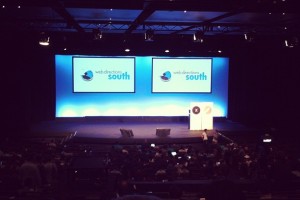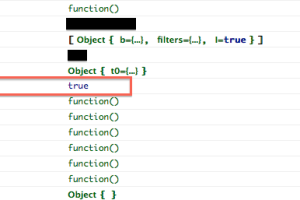[Warning] horrible allusion to Star Wars below (video included).
Australian consumers are ready to buy locally online given the right price and a solid online eCommerce system. Click Frenzy proved this once and for all. However, Click Frenzy failed to recognise the warning signs and deal with them accordingly, most obviously, that they were expecting up to 1 million shoppers.
Doing a quick search on Twitter for the hashtag #clickfail or ‘Click Frenzy’ will quickly pull up a multitude of reasons as to why Click Frenzy was a failure. Indeed it was a spectacular one that was quite enjoyable to watch.
From almost the instant the clock hit 7pm, the site collapsed under the shear load from would-be bargin hunters. The site was running Magento that was implemented and customised by Fontis. It appears they have significant experience in the Magento product with their website stating they “…are the first Magento Partner in Australia“.
Click Frenzy was a failure for the brand itself and the users who all jumped on to use the site at 7pm. Kudos go to all the individual brands that took it in their stride and used other channels such as Facebook, Twitter and Email to inform customers of their deals.
I mean no disrespect to those involved with Click Frenzy, but there are some critical lessons to be learnt here.
Plan for the edge cases
Yes, it might be more expensive and take more a lot of time, but the classic saying of “Better to be safe than sorry”, which will no-doubt be one tact the guys at Click Frenzy will be saying. But let’s be honest, they’ll probably be more likely to say “We couldn’t anticipate users of that magnitude” – I say this line in Admiral Ackbar voice for added dramatic flair. The latter of which is completely untrue and the former an admission of poor planning.
A number of articles appearing in the Sydney Morning Herald, some a month before the event indicated that up to 1 million shoppers were expected to participate. This was posted on the 15th of October. The line by the co-founder, Grant Arnott, is a little too ironic looking back:
“Newer websites will be most at risk of collapse with all retailers encouraged to update their online infrastructure to cope with demand, Mr Arnott said.”
Another article was posted on the 14th of November highlighted that online stores might not be ready for the barrage of bargin hunters come the 24 hour shopping marathon. Although no mention of Click Frenzy was made.
It is obviously clear that the team from Click Frenzy expected to have a high turnout to the event. But how this has not translated to ensuring they have adequate infrastructure and performed load testing on their Magento install is baffling While it seems that a large number people have hit out at Magento for not being a suitable software choice considering the size. I tend to disagree. The actual site doesn’t look to be too large and I think to boil it down to the software package itself is unfair. The software package requires customisation on a case-by-case basis, in this case, the customisation was poorly implemented (or was it done at all?). Regardless, I would have done a couple things:
- Read the documentation from the guys that develop Magento. In particular an article that details scaling Magento to be used as an enterprise eCommerce system. It provides a number of helpful tips to improve performance of the install.
- Spoken to other Australian/International retailers using Magento as their eCommerce system of choice. Having a quick look on the Magento site, it seems there is no lack of retailers to contact. Bing Lee is one of the retailers that participate in the Click Frenzy event and they seemed to be able to handle the load with only a few minor hickups.
- Perhaps use a CDN. They went with UltraServe. I’m sure they are a great provider for small/medium businesses but when you know your site is going to get around 1 million hits within a 24 hour period you need to get the big guns in.
It was a success however in showing that Australian consumers are ready to buy locally online given the right price and solid online eCommerce system. Now (well about 5 years ago), is the time to ensure that any eCommerce system that expects to receive sizeable traffic spikes is prepared to handle these events and if not, urgently rectify the issue.
Hopefully this will be a good lesson for other online retailers who look to have similar events in the future and plan accordingly. Most importantly, if you have a couple of your techies jumping up and down saying the implementation won’t be able to handle the load, then you need to do something about it!



